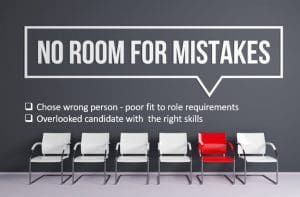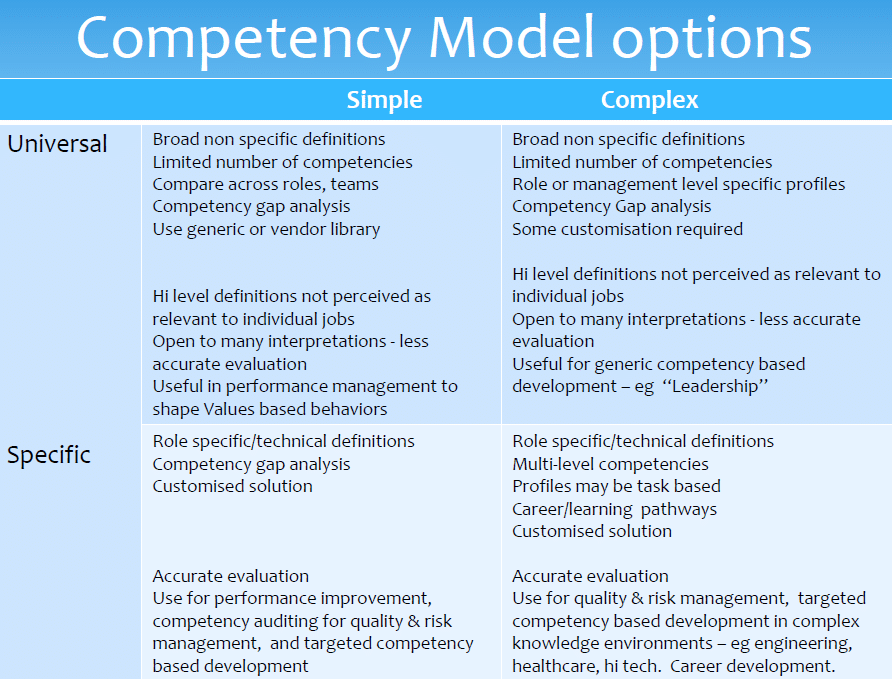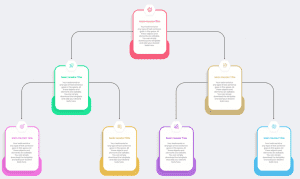
Fatal Errors through the Talent Management Lifecycle
Talent Management is a complex, multi-stage process. At each stage, well-meaning efforts can go off track—resulting in poor decisions, disengaged employees, and costly inefficiencies. This guide outlines the most common mistakes across the Talent Management lifecycle, why they happen, and how to avoid them.
1. Role & Capability Architecture
Fatal Error: Job roles requirements are vague, outdated, or based on hierarchy rather than function. They may be copied from generic templates. There is no clear definition of the capabilities required to succeed in each role.
Why it hurts: People are not clear on what is expected of them. Hiring may be misaligned. Job performance is not optimised and it is difficult to measure success or plan development.
How to fix: This is the number one priority – all other talent management processes depend on it. Use a structured job and capability architecture. Clearly define purpose, accountabilities, and required capabilities for each role. Update these role profiles regularly as the business changes.

2. Talent Acquisition & Onboarding
Fatal Error: Hiring decisions heavily based on resume keyword analysis and/or weighted on qualifications and experience alone. This is compounded by unclear role definitions.
Why it hurts: Poor quality hires, early attrition, slower ramp-up, and wasted recruitment costs.
How to fix: Use skills based hiring with competency based screening tools and interviews. Hiring criteria is fit to role requrement and capability. If using AI make sure there is a person in the loop at all stages. Customize onboarding to the role and person.
3. Skill/Competency Frameworks
Fatal Error: Overly Complex Frameworks. Building massive role/competency libraries with dozens of levels and hundreds of items.
Why it hurts: Information overload, too hard to maintain. Assessment fatigue, low adoption, and “analysis paralysis.”
How to avoid: Start lean—limit yourself to maximum of 8 competencies per role and maximum three proficiency tiers, if any. Iterate based on actual usage and stakeholder feedback.


4. Goal Setting & Performance Management
Fatal Error: Goals are unclear, misaligned, and or unable to be measured. Feedback is infrequent and not tied to competency development. Managers lack tools and training for fair performance conversations.
How it hurts: Staff are not clear on priorities, performance is not measurable and suboptimal, business golas are not well met.
How to Fix: Use a balanced score card for organizational objectives., Ensure job roles are aligned. use tools that enable creation of ‘SMART’ goals. Provide sufficient job support information and guides. Use continuous feedback with tools to record and summarise it for end of year formal evaluations.
5. Competency & Performance Assessment
Fatal Error: Evaluations are subjective, influenced by personal bias, and inconsistent between managers.
Why it hurts. Assesssments are not accurate, capable people are overlooked and become disengaged. Career & Succession decisons are affected.
How to fix: Ensure all performance expectations and competency requirements are measurable with observable criteria. Ensure rating scales have clear descriptions. Use a moderation process in evaluations and allow staff to safely challenge anything they feel is unfair.
Use observable indicators and behavior-based assessment.
Apply consistent standards across roles and teams.
Separate assessment of performance and potential.

6. Learning & Development
Fatal Error: Recommended training is via standardized learning tracks and not linked to Capability and Competency requirements and gaps. Staff choose development based on interest not gaps against current or future roles. There is little follow through on development outcomes.
Why it hurts: Learners are not engaged. There is low learning transfer to the job, critical capability & competency gaps are not addressed. Development investment is wasted.
How to fix: Link learning resources to Capability & Competency Frameworks. Identify individual and role based needs, create and track progress of development objectives linked to the relevant learning resources – mix formal courses, on-the-job experiences, coaching, and micro-learning.

7. Career Development & Succession Planning
Fatal Error: Staff don’t know about opportunities to progress. Position change decisions lack clear criteria and talent assessments are subjective, more a measure of staff/manager relationships or desire to hold onto high performers. Succession planning is reactive or based on visibility, not capability.
Why it hurts: Staff are frustrated, disillusioned and may move on. There are leadership gaps and over dependency on external hiring. ship gaps, dependency on external hiring, and stalled internal mobility.
How to fix: Make career paths transparent to staff and capability-based. Allow staff to indicate interest in new roles and engage in regular career development conversations. Use evidence based criteria to identify those suitable to advance in career aspirations. Create talent pools with targeted development plans. Identify potential successors using validated performance and capability data and readiness indicators.
8 Siloed Fragmented Data & Disconnected Tools
Fatal Error: Having Talent information in different platforms and or across multiple spreadsheets
Why it hurts: Information is inconsistent, inaccurate, and or missing, adversely affecting insights and decisions. Administrative costs are very high.
How to avoid: Centralize talent data in a unified system, or integrate best-of-breed tools via APIs so updates flow automatically.

9. Neglecting Manager Enablement
Fatal Error: Assuming managers intuitively know how to coach, give structured feedback, or use your new talent tools.
Why it hurts: Feedback and development conversations don’t happen or fall flat. Talent management tools are underutilized and critical information is not captured.
How to avoid: Ensure managers are trained on talent management processes and rationale, as well as feedback techniques, assessment bias awareness, platform navigation and reporting features.
Effective talent management demands structure, transparency, and alignment at every stage—from defining roles to growing leadership pipelines. By avoiding these fatal errors and integrating capability-driven practices, organizations can create a resilient, high-performing workforce.

